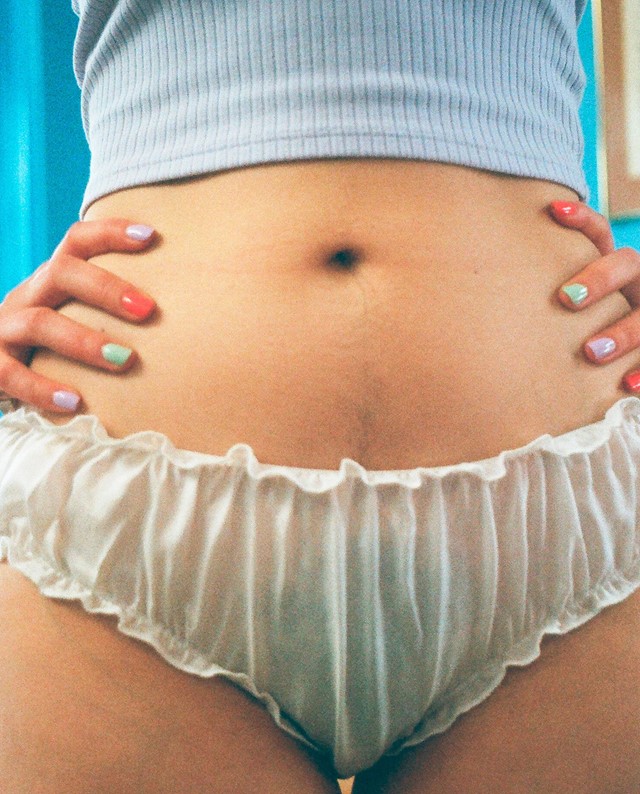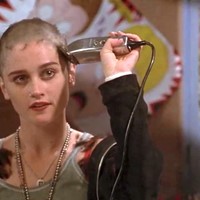With so many people with vulvas still experiencing deep shame and anxiety, campaigners and artists are leading to movement to normalise and celebrate the great diversity of vaginas
We are entering the age of the vulva*. If you are sceptical, take stock of the current pop culture landscape for a moment. Think of Cara Delevingne gleefully crawling through her vagina tunnel, of Janelle Monae’s vagina trousers in her “Pynk” music video. Think of Goop’s “This Smells Like My Vagina” candle and Erykah Badu’s “Badussy” incense crafted from burning her own underwear; of celebrities left, right, and centre shilling sex toys.
Slowly but surely, vulvas are making their way into the cultural conversation, an acceptable – fun, even – topic to reference and openly discuss. It’s a long overdue shift for the once taboo body part and one that is much needed in a time when so many people with vulvas still experience such deep shame and anxiety around their anatomy.
Shame has been baked into vulvas from the beginning. The original Latin term for the vulva was pudendum which directly translates as the part to be ashamed of. And many people are – research has found that one-third of young women avoid going to the doctor for gynecological health issues, while 65 per cent struggle to even say the words vagina or vulva. Last year, a study conducted by period product brand Callaly discovered that one in four people have negative feelings, including hatred and disgust, towards their vulvas and that one in five people aged 16-24 have considered cutting their labia or bleaching their vulvas.
This anxiety over the appearance of their vulvas is leading people, sometimes as young as nine years old, to increasingly go under the knife. In 2013, labiaplasty, plastic surgery that reduces the size of the labia minora, was the fourth most popular form of cosmetic surgery in the US and the third most popular in the UK, and the figures have only continued to rise. In 2019, the number of labiaplasties performed worldwide increased by 24 per cent from the year before.
“I think quite a lot of it is that most people don’t see many vulvas in their life, and when they do it’s often in either art or porn,” says Zoe Williams, spokesperson for the (world’s first) Vagina Museum, on where this shame is coming from. “Throughout the history of art there’s been very specific ways of depicting vulvas which are always hairless and without labia sticking out. Sometimes not even the pudendal cleft is visible. That becomes the standard and anything deviating from that becomes wrong.”
Major sites like Pornhub are filled with videos tagged ‘innie pussy’, ‘perfect innie pussy’ and ‘innie vagina’. Meanwhile, educational and artistic depictions of vulvas face censorship and regulation. “There is a rule in Australia that magazines cannot show the true likeness of a vulva in a drawing, it can only show two lines and everything all ‘tucked in,’” explains Ellie Sedgwick, the photographer behind the Flip Through My Flaps blog. “This is not the reality! My labia have been called a kebab because they were ‘messy’ and not neat and tidy. People can be really cruel.”
“For many of these people, the negative feelings [about their vulvas] have made them insecure and embarrassed in intimate situations, and have often affected their ability to be freely intimate with their partners or lovers” – Hilde Atalanta
If we aren’t seeing many vulvas outside of the worlds of porn and art, many of us also often aren’t even seeing our own – one-third of people surveyed by Callaly said they had never looked at their own vulva. (Nearly half of the 16-24 year olds didn’t even know what a vulva was.) It was exactly because of this kind of ignorance and misinformation that second-wave feminism in the 1970s encouraged people to look properly at their vulvas and demystify their own anatomy. “Take a mirror and examine yourself. Touch yourself, smell yourself, even taste your own secretions. You are your body and you are not obscene,” foundational text Our Bodies, Our Selves stated. In the face of shame and chronic lack of education, these consciousness-raising sessions were radical. Informing yourself about your own reproductive health became a political action.
While the activity has largely fallen out of favour in the intervening years, it was brought back to attention in an episode of Sex Education released last autumn. The storyline began with 17-year-old Aimee (Aimée Lou Wood) examining a plastic replica of a vulva in sex therapist Jean’s (Gillian Anderson) office. “Um, my vagina doesn’t look like this, one of my lip bits is longer than the other,” she says.
After explaining that labia come “in all different shapes, sizes and colours,” Jean directs Aimee to a website showcasing a wide variety of vulvas – a real site created in collaboration with Dutch illustrator Hilde Atalanta, the artist behind The Vulva Gallery and the sex education book A Celebration of Vulva Diversity. Later on we see Aimee taking a look at her vulva in a mirror, deciding it looks like a “geranium”. Scenes like this show there is no such thing as a normal vulva (it’s scientific fact) and more than half – 56 per cent – of vulvas have visible labia minora AKA outie labia.
“Sexual health education is poor in many countries and representation of genital variations isn’t part of the lessons taught in schools. Young individuals aren’t taught that their genitals can look very diverse, and that this is OK and normal,” says Atalanta, who founded The Vulva Gallery in 2016 after attending a lecture at the University of Amsterdam where they were studying clinical psychology and learning about the huge global rise in labiaplasty. They decided to do something about this lack of diverse representation with the hope of educating the next generations and helping them feel more comfortable and confident in their bodies.
Over the years Atalanta has painted the vulvas of hundreds of people – the Vulva Gallery is gender inclusive and welcomes all – and though they say experiences have varied, the topic of vulva shame has arisen frequently in the stories they’ve heard. “For many of these people, the negative feelings have made them insecure and embarrassed in intimate situations, and have often affected their ability to be freely intimate with their partners or lovers,” they say. Thankfully Atalanta’s work is offering relief and comfort to many: “The messages I receive on a daily basis are very positive. Several people have even told me that, because of the Vulva Gallery, they have cancelled the labiaplasty surgery they had scheduled.”
It seems the tide is changing, however – at least if you’re on TikTok. There, users are attempting to normalise and celebrate “outie labia” using humour and memes. Ying Lee AKA @sativaplath69 makes videos joking about gatekeeping phat coochie culture, “plateau pussy privilege”, and the comments and bullying they’ve received because of their “mountain mound”. While former Playboy Bunny Gaby Scaringe (@gabygabss) has racked up millions of views on her videos making light of her “outie labia” (“Normal girl, 5’4”, blue eyes, brown hair, a meaty outie”) and educating people on the diversity of vulvas, and has even created an underwear line that accommodates large labia, called Cherri.
@sativaplath69 this is a joke but also serious stop appropriating phat coochie culture #fyp #comedy ♬ original sound - Ying
TikTok doesn’t always make it easy for users to discuss vulvas openly, though as it often censors even educational content around the anatomy (the Vagina Museum stopped using the platform because their videos were being taken down for speaking directly about vulvas, and they face continual threat from other social media). And last summer, Instagram banned a post they shared of an educational illustration of a vulva, part of a campaign by Callaly.
“We Need To Talk About Vulvas” aimed to debunk the myth of the “perfect vulva” by amplifying diverse, real experiences and posting realistic, informative imagery. By banning the images and taking down the post, Instagram ironically proved the point of the campaign and the importance of education and de-stigmatisation around vulvas. The brand also struggled with getting its campaign covered by mainstream publications, who didn’t want to show pictures of even the plaster casts that had been made of the vulvas of ten Callaly spokespeople. “We had to convince them to use the images. It just goes to show how taboo vulvas still are,” says Jody Elphick, Callaly’s former head of brand who led the campaign.
Social media and mainstream representation can be a vital tool in facilitating these discussions, but while they are still censoring and regulating bodies and vulvas, the conversation will need to move beyond the digital realm. Clearly there is still a long way to go to reassure women and people everywhere that their vulvas are perfectly fine just as they are. “Instagram is good for spreading awareness, but I think the heart of the conversation needs to be real people getting honest with each other, ideally in the same room,” says Elphick.
*For those unsure on the difference between vulvas and vaginas: “vulva” is the name for the collective external parts of the female genitalia including the clitoris and labia. “Vagina” refers solely to the internal tube connecting the vulva with the cervix i.e. where babies come out, tampons etc. go in.




